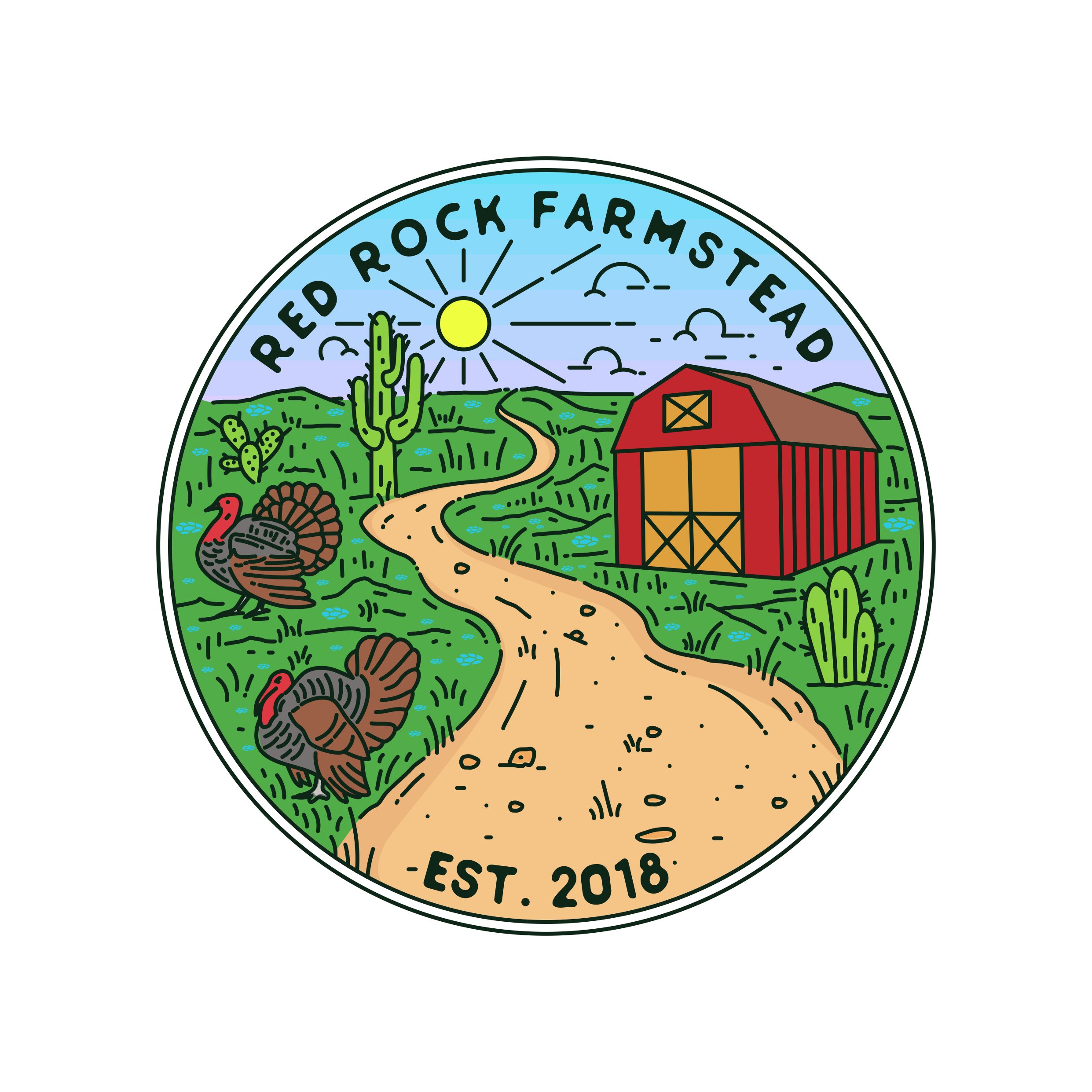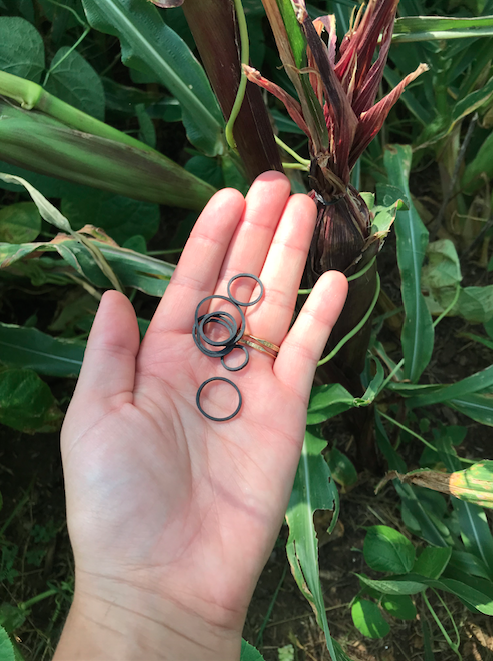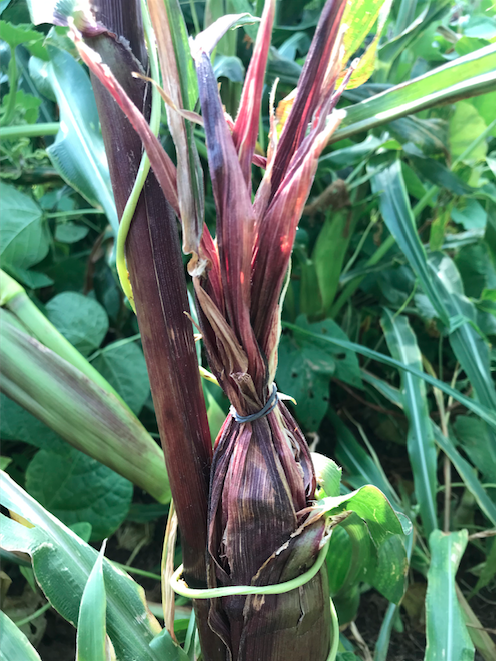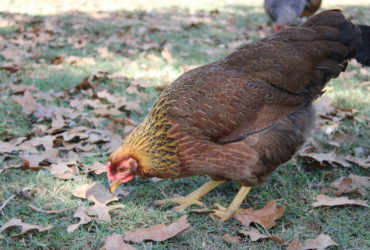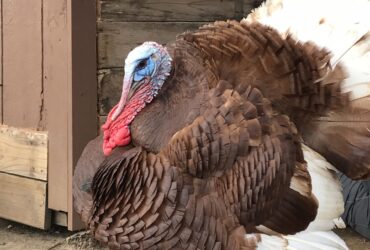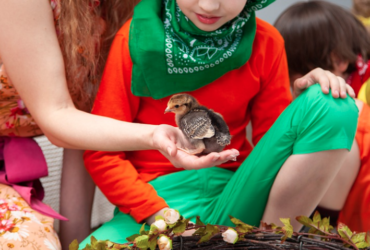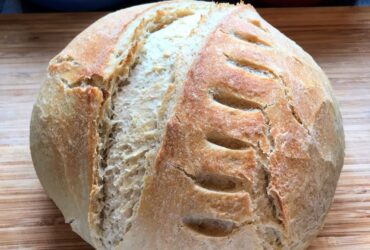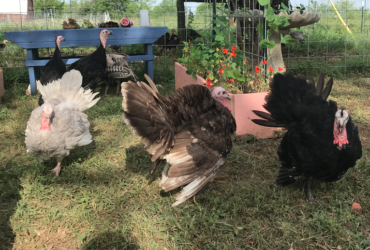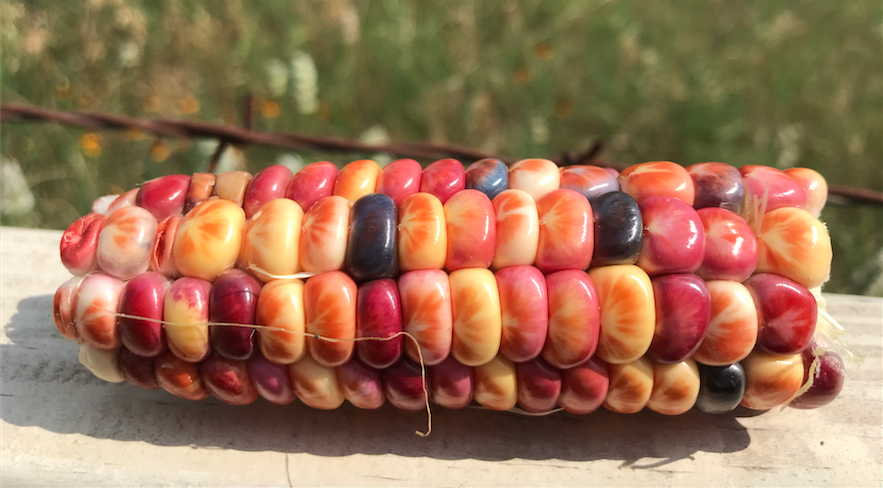
Tips + Tricks
How I conquered the corn earworms.
As an Amazon Associate I earn from qualifying purchases.
Today I am sharing the tactics I used to rid my garden of corn earworms!
The level of rage I felt when I peeked into a much-anticipated ear of corn only to find brown mealy goop and a fat, happy caterpillar is indescribable. The corn I planted in my “Three Sisters” garden eagerly on March 1st was the plant I was most excited to tend to. I tried to grow corn in the past, but was thwarted by poor soil, blazing dry heat, and lack of water.
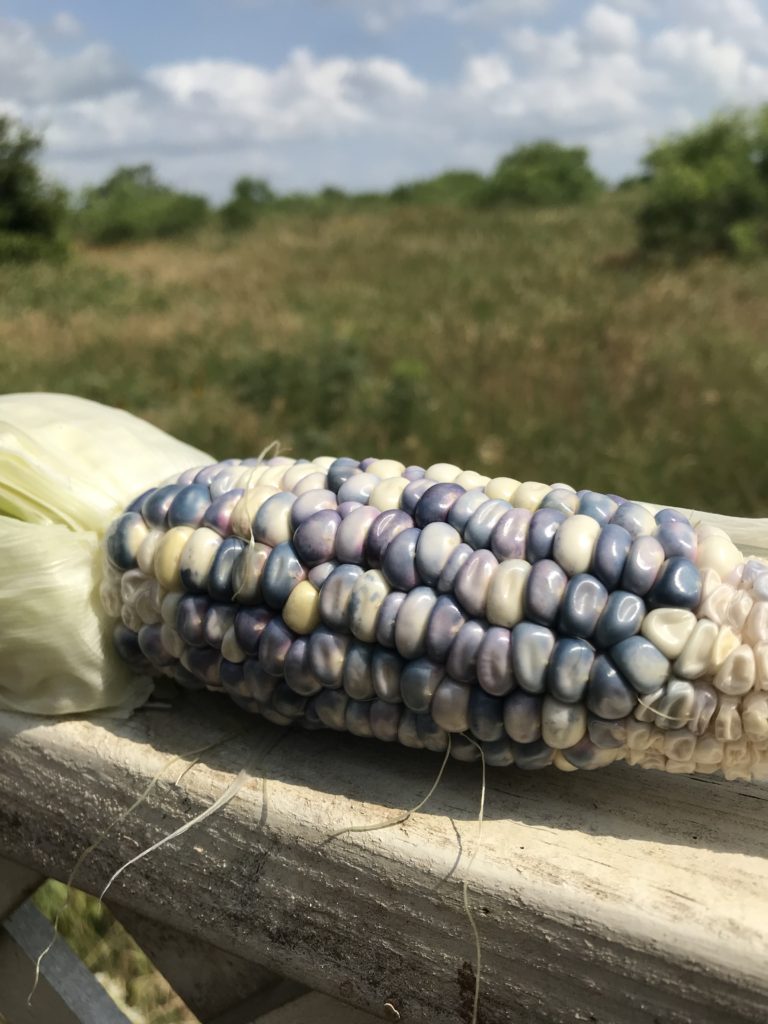
Since then, I dreamt of cultivating several varieties of beautiful, colorful corn. I had seen the #goals ‘Glass Gem’ corn gardeners all over Instagram were harvesting last fall and I was pumped to plant similarly magical varieties in our new garden this Spring.
As an impatient gardener, I wanted to peek into a couple ears of corn to make sure they were, indeed, growing ( I honestly couldn’t believe I had grown some successful ears of corn!). The plants had grown tall, tassled, and started to spurt little fountains of corn silk out of the baby corn husks. Since it was my first time growing corn successfully, I couldn’t help but look and see what was happening inside! I’m glad I did. I excitedly, but delicately, peeled back the corn husk. To my horror, I was met with a mess of a mealy brown substance and the nastiest, green and brown caterpillar munching away on my prized corn.
I angrily ripped the worm off the corn as it wriggled violently, upset I had removed it from the all-you-can-eat buffet. I threw it on the ground and stomped it. Reeling from my discovery, I nervously peeled back one corn husk after the other to find the same scene. My beautiful corn was being eaten by the sneakiest of intruders. I was crushed.
Learning About Earworms
A very quick search told me I was dealing with Helicoverpa zea the Corn Earworm.

Many of the ears that had been eaten were too late to save. The worm had completed its journey in through the silk of the corn, around some of the kernels, then burrowed out of the corn leaving a small hole in the husk. I also found a few suspicious holes in my tomatoes that were just starting to ripen.
I quickly researched my best options for stopping any further damage to the few lucky ears of corn that were not chosen as well as my ripening tomatoes nearby.
It seems the challenge with corn earworms is that once they have eaten their way down into the inside of the corn, protected by the husk, they eat undisturbed by any hand-removal or spraying of pesticides.
One natural method I read about involved placing a few drops of mineral oil on the exposed corn silks, so that it drips down into the corn husk, effectively smothering the feeding worm inside. This does not hurt the corn. I wanted to try this, but had already removed most of the worms by hand or they had already abandoned the corn.
The earworms already damaged the tops of the corn, but I could still try to save the tomatoes (and the few pieces of corn that had not yet been affected).
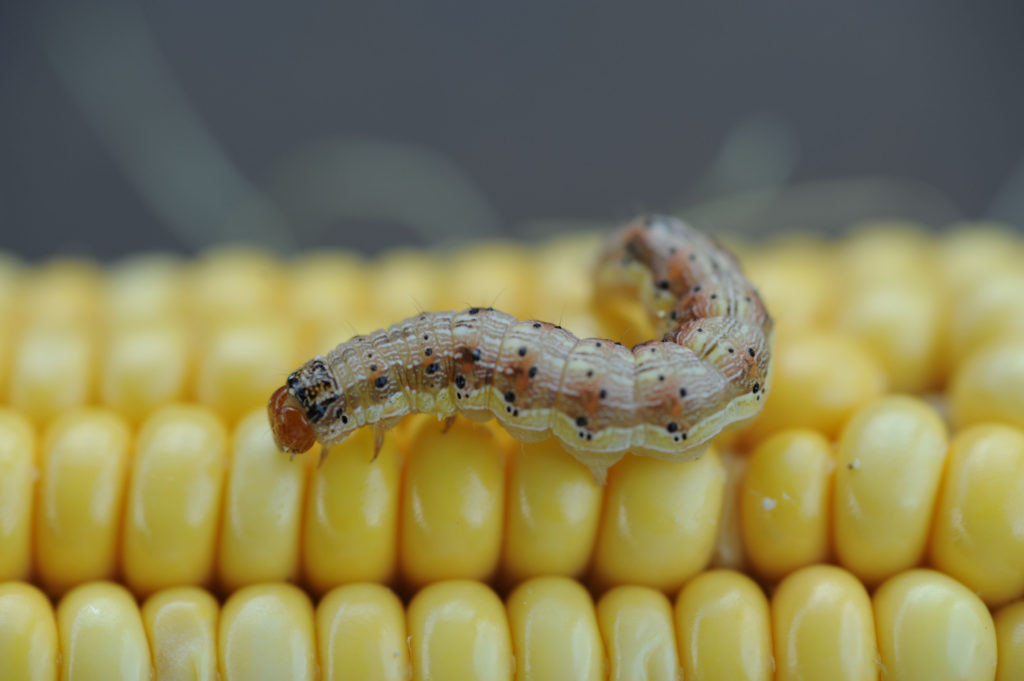
Using Bt as an Insecticide
Bt or Bacillus thuringiensis:
is a species of bacteria that lives in soil. It makes proteins that are toxic to some insects when eaten, but not others.
http://npic.orst.edu/ingred/bt.html
It is a naturally occurring microbe that scientists discovered is toxic to caterpillars (the larval form of butterflies and moths). When caterpillars eat Bacillus thuringiensis (Bt) they die in a matter of days to weeks because they are poisoned by the toxin in their digestive tract.
When I first saw Bt being mentioned as an insecticide that targets caterpillars, I was worried by the term. I didn’t want to introduce any chemicals into the garden. With a little more research I discovered Bt to be a natural microbe, found in many soils, It is also approved for organic gardening. It does not affect humans, birds, other mammals like your pets, etc. The type of Bt sold in stores labeled as “Caterpillar Killer” or similar names is the strain that only targets caterpillars. There are other strains of Bt that are marketed to kill flies and mosquitoes and a few other groups of pests, but I was only concerned about the caterpillars are this point. (Bt also kills tomato hornworms!)
Is Bt Safe?
My last worry was hurting any butterfly larvae that I was not intending to target. Although these caterpillars would be affected too, I hadn’t seen any caterpillars in the garden other than moth larvae that were being pests to my garden, eating my lettuce and cucumber leaves and leaving unsightly droppings all over the place.
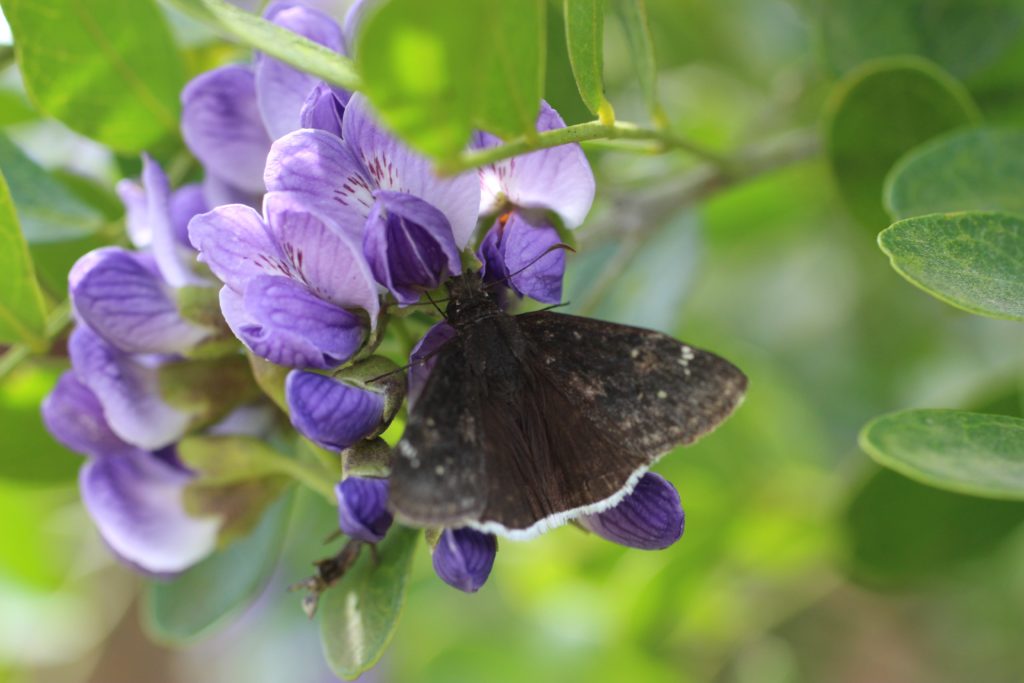
I made sure to read studies about Bt to make sure there would be minimal damage done to any monarch butterfly larvae that might be munching near our house. The only scientific studies available are about corn crops that are genetically modified to have Bt in its coding. There was not much information about home gardeners spraying their gardens, but I was more concerned about the end-result of the insecticide on feeding caterpillars (that ate other host plants outside my garden). I felt that even though I was not growing Bt modified corn I could still compare the results of these studies to my own garden.
I’m not saying I’m a fan of genetically modified crops. I think that is something scientists and farmers alike have to be incredibly careful with. I think some genetically modified crops have benefits, but some are incredibly harmful to our ecosystem, food, and ultimately our health. This is a discussion for another day!
Back to the Bt. My takeaways from the studies were as follows:
(Here is the main study from 2001: https://www.pnas.org/content/98/21/11937)
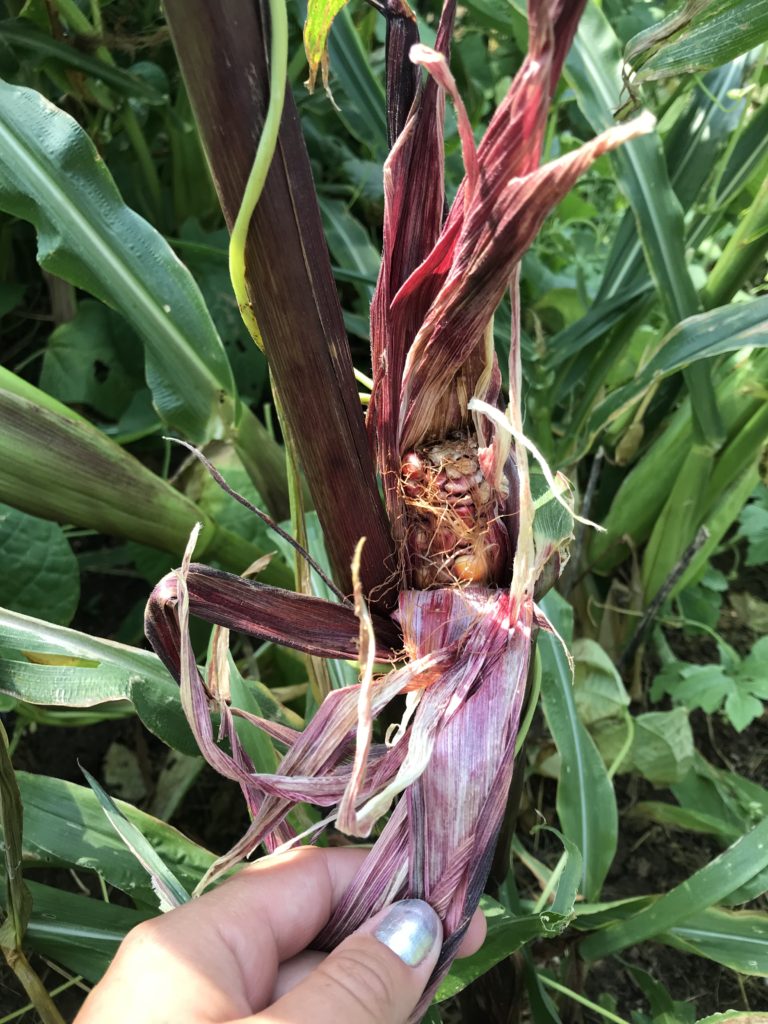
- With the current commercial Bt strains used today there is little to no effect on monarchs eating milkweed plants nearby to Bt corn crops. Event 176 hybrids were a strain of Bt corn that was more toxic, but is used very rarely today and has been essentially phased out of crops as of 2003.
- The newer strains of Bt corn grown commercially have significantly less effects on monarchs. Showing no to minimal effects on larvae.
- Some monarchs that received higher doses of Bt (eating milkweed in cornfields or that received large amounts of Bt corn pollen during pollen shed) ate less and grew slower. These effects were sublethal (not deadly).
Although the studies are not definitive and don’t 100% apply to home gardens, my conclusion is that if a monarch caterpillar eats a little bit of Bt that has been sprayed on a milkweed leaf they might be totally fine or they might eat a little less. While we do have some monarch butterflies pass through our property, I don’t see an abundant amount of milkweed anywhere near my garden. I felt confident that as long as I carefully applied the Bt, taking care to not let the wind blow it around my property as I was spraying, the ‘good’ caterpillars would be safe.
Through Wikipedia I also learned that several studies showed that any Bt ingested was broken down very quickly in the human digestive tract which eliminates it from being a food allergen.
How to Apply Bt
Before I bought some Bt, I went around to all of my corn that was damaged and snipped off the damaged tips of the cobs. The already eaten tips were becoming an attractive hang out spot for other bugs, so I wanted to get rid of those parts. It makes for some ugly corn, but at least 3/4 of my corn will be salvageable – at least for seed to try again next year. I also didn’t want water getting down into the corn cobs beneath the husk and rotting, so I rubber banded the tops of the husks shut to help protect it.
So I acquired some Bt and got to sprayin’. I waited until evening, since the Bt is broken down in sunlight. The caterpillars have to actually eat the Bt to feel the effects, so you want to apply it where they are going to be feeding. The worms that were already inside of tomatoes and corn, unfortunately, wouldn’t be affected unless some of the spray somehow dripped into the fruit or corn, but I was hoping I would be able to stifle any incoming generations of corn earworms that might be hatching soon.

Make sure you check the instructions on your specific brand of Bt to mix the correct concentration. If you are using a sprayer connected to your hose you can indicate the concentration (amount per gallon) on the dial. You want to spray the tops and bottoms of leaves. Then reapply the Bt once a week to stop any further generations from infiltrating your garden. Since Bt breaks down quickly, you want to make sure to reapply or else the worms can come back. It’s a very easy process. I sprayed down my plants in about 5 minutes. And so far, I haven’t seen any more worms in the garden.
Since the worms were starting to migrate over to my tomato plants which were just starting to have ripe fruit, I’m hoping any attempts at tomato munching will be stopped. Even if my corn is somewhat destroyed, at least maybe I can save the tomatoes!
Some helpful Bt information that helped me draw my conclusions:
https://extension.colostate.edu/docs/pubs/crops/00707.pdf
http://npic.orst.edu/ingred/bt.html
https://en.wikipedia.org/wiki/Bacillus_thuringiensis#Safety_studies
https://todayshomeowner.com/using-bt-for-organic-caterpillar-control-in-your-garden/
